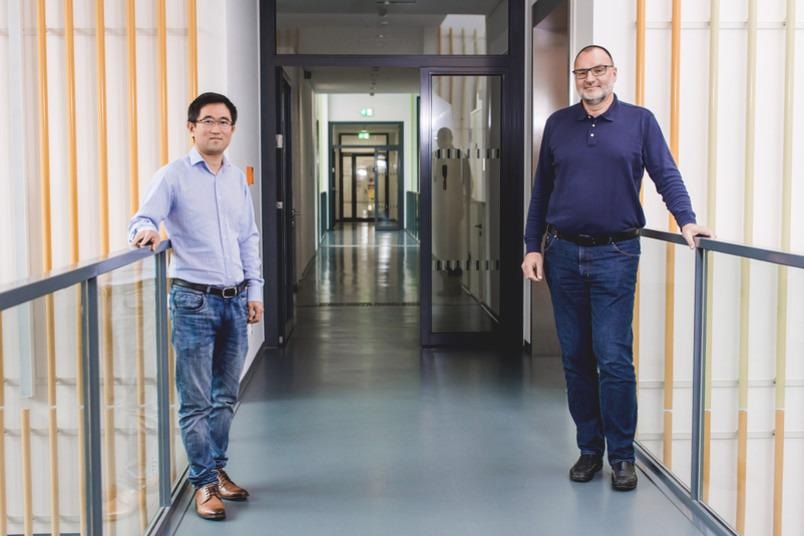Feb 9 2021
A German-Chinese group of researchers has discovered a new synthetic path to generate biofuel from biomass.
 The Bochum-based catalysis team: Baoxiang Peng (left) and Martin Muhler. Image Credit: RUB, Rohlf.
The Bochum-based catalysis team: Baoxiang Peng (left) and Martin Muhler. Image Credit: RUB, Rohlf.
The chemists transformed 5-hydroxymethylfurfural (HMF), a substance produced from biomass, into 2, 5-dimethylfuran (DMF), which could be used as a biofuel. When compared to early techniques, they achieved a greater selectivity and yield under milder reaction conditions.
The research team under the guidance of Dr Baoxiang Peng and Professor Martin Muhler from the Laboratory of Industrial Chemistry at Ruhr-Universität Bochum (RUB) and another team led by Professor Christof Hättig from the RUB Chair for Theoretical Chemistry have explained the technique together with collaborators from Changzhou, China, in the Angewandte Chemie journal.
The final version of the article was published online on January 22nd, 2021.
The study was part of the German-Chinese research collaboration named 'Novel Functional Materials for Sustainable Chemistry,' supported by the German Research Foundation.
Better Fuel than Ethanol
DMF would be well-suited as a biofuel, as it has a higher octane number than ethanol, a better energy intensity and an ideal boiling point of 92 to 94 degree Celsius.
Dr Baoxiang Peng, Laboratory of Industrial Chemistry, Ruhr-Universität Bochum
There has been intense research on the transformation from HMF into DMF, but there are various obstacles associated with it.
The synthesis of DMF necessitates comparatively extreme reaction conditions, like high hydrogen pressure, and usually only generates a small quantity of the preferred product, while developing undesirable by-products as well. Hence, scientists are seeking new methods to effectively activate the reaction under milder conditions. This was realized in this study.
Formic Acid as the Key to Success
The researchers performed the reaction using hydrogen and formic acid. The catalyst used was palladium nanoparticles. Thus, the chemists could realize a five-times higher reaction rate compared to those reported with earlier techniques. Specifically, the addition of formic acid played a vital role in making favorable reaction conditions, as demonstrated by the team in their elaborate investigations.
The researchers carried out the reaction with several additives and compared the selectivity and yield, which were found to be the best in the presence of formic acid. This substance enables a quicker reaction pathway and further prevents unnecessary side reactions from occurring.
Journal Reference:
Hu, B., et al. (2020) Formic Acid‐Assisted Selective Hydrogenolysis of 5‐Hydroxymethylfurfural to 2,5‐Dimethylfuran over Bifunctional Pd Nanoparticles Supported on N‐Doped Mesoporous Carbon. Angewandte Chemie. doi.org/10.1002/anie.202012816.